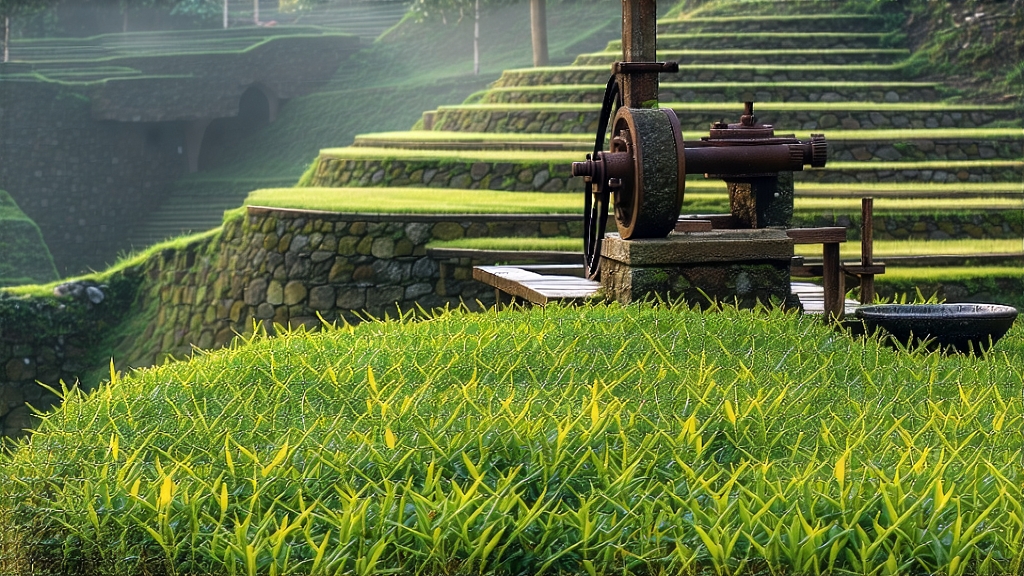
Tucked high on the mist-laced shoulders of Sichuan’s Meng Ding Mountain, Meng Ding Huang Ya—literally “Yellow Bud from Meng Ding”—has been whispering its mellow, apricot-sweet secrets for more than twelve centuries. Foreign tea lovers often greet the word “yellow tea” with a polite nod, assuming it is merely green tea in disguise; yet one sip of this luminous liquor proves that yellow tea occupies a quiet throne of its own, halfway between the grassy vigor of green and the soft maturity of white. Among the sparse yellow family, Meng Ding Huang Ya is the most aristocratic, the first to be recorded as imperial tribute during the Tang dynasty (618-907 CE) and the last to survive the turmoil of twentieth-century war and market neglect. Today, only a few hundred kilograms leave the mountain each spring, most claimed by collectors in Beijing, Tokyo and Paris before the leaves have even finished their final bake. To understand why these downy buds command prices higher than silver-tip dragon-well, one must follow the leaf from legend to laboratory, from dynastic court to glass teapot.
Legend credits the Buddhist monk Wu Li-zhen for planting the original seven bushes on Meng Ding’s summit in 53 BCE, making them, according to Chinese annals, the first cultivated tea trees in the world. By the Tang period, the tender buds were rushed by horseback and riverboat to Chang-an, wrapped in silk soaked with mountain spring water to keep them from oxidizing. Song-era poet Lu You waxed euphoric about “the dew of Meng Ding, sweeter than nectar,” while Ming emperor Hongwu so coveted the tea that he exempted the mountain’s monks from grain taxes in exchange for an annual tribute of 360 tiny cakes, each pressed from exactly 108 buds. The Qing court later shifted its fascination to fragrant green teas, and Meng Ding Huang Ya retreated into monastic obscurity, preserved only by the disciplined lineages of Shaolin-linked temples who valued its meditative, low-caffeine calm. When the mountain’s ancient groves were rediscovered in 1978 by a Sichuan agricultural survey team, three venerable trees still bore leaves; cuttings were taken, grafted onto local rootstock, and the cultivar Meng Ding #9 was born, now the genetic backbone of every authentic Huang Ya garden on the mountain.
Botanically, Meng Ding Huang Ya belongs to the small-leaf Camellia sinensis var. sinensis, but centuries of selection have produced an unusually high ratio of soluble sugars to polyphenols, giving the tea its signature honeyed finish without any actual honey. The picking window is cruelly short: only three misty mornings between the Qingming festival (early April) and Grain Rain (late April) when the bud is unopened, still wearing its pale green “fish-scale” coat. A master plucker can gather barely 500 grams in a day, working on 60-degree slopes where each step must be wedged into centuries-old footholds carved by monks. The buds are immediately deposited into bamboo baskets lined with fresh banana leaves to prevent compression bruising, then carried downhill on foot—no machines are allowed inside the 2,000-hectare core zone—to the 400-year-old Roasting Temple, whose pine-fired stoves have never been allowed to go cold since the late Ming.
The magic of yellow tea lies in the sealed yellowing step (men huang), a protocol so labor-intensive that few factories attempt it anymore. Once the buds arrive, they are spread three centimeters deep on bamboo trays and wok-tumbled for exactly 180 seconds at 140 °C to kill the green enzymes. While still steaming, the leaves are wrapped in thick parchment paper and placed inside a pine box lined with wet cloth; the box is slid into a 35 °C, 85 % humidity chamber for 48 hours. During this sauna-like rest, chlorophyll gently degrades into pheophytin, catechins oxidize just enough to shed astringency, and a faint golden pigment—tea flavin-3-gallate—blooms like dawn light. The leaf is then re-fired, re-wrapped and re-rested up to three cycles, each time losing roughly 12 % of its moisture and gaining a luminous straw-yellow hue. Finally the buds are charcoal-baked over embers of local cedar, a six-hour vigil demanding the master’s bare hand to gauge temperature by touch alone. When finished, 4.2 kilograms of fresh buds have withered to